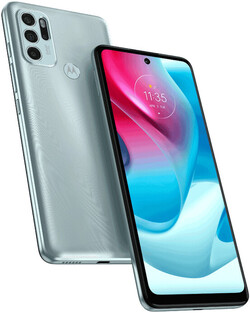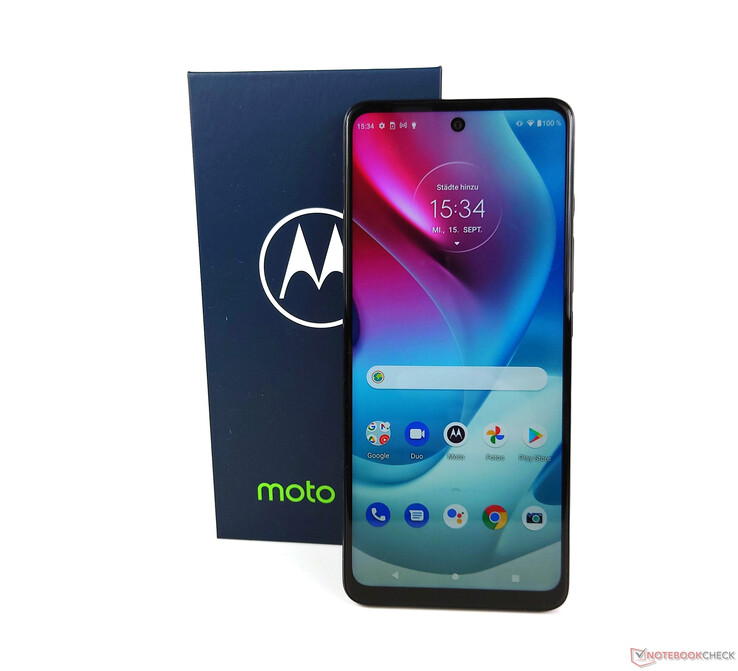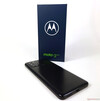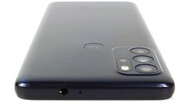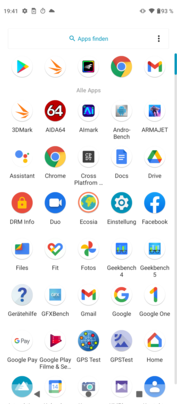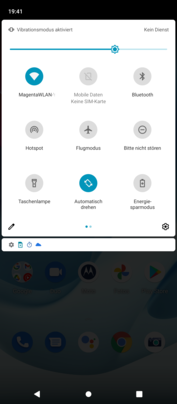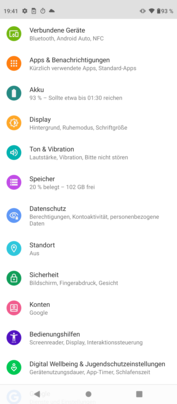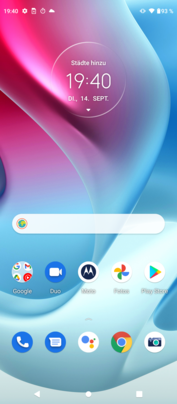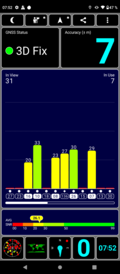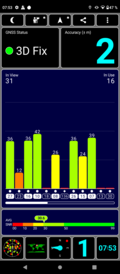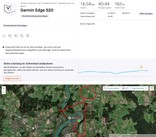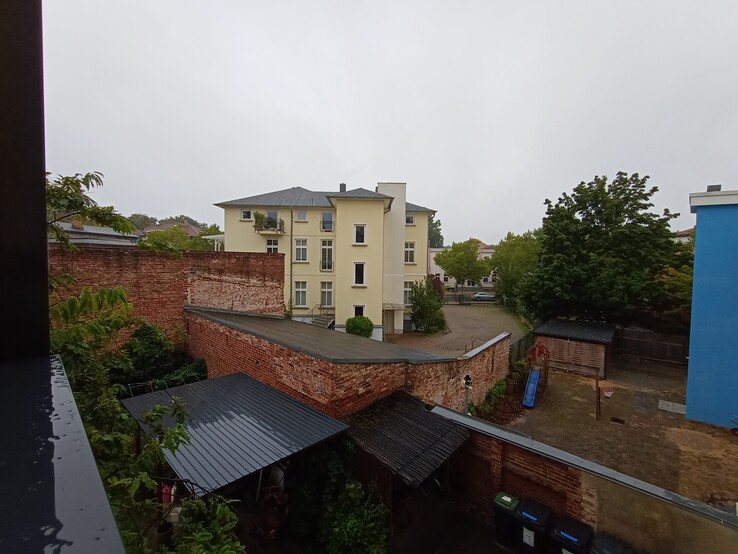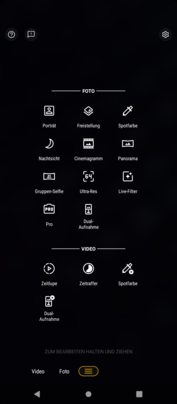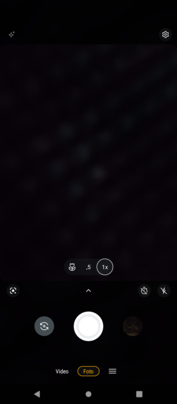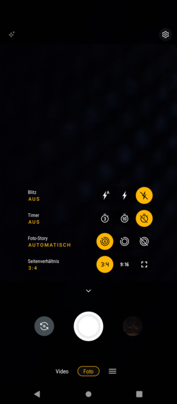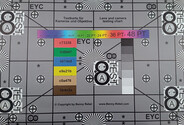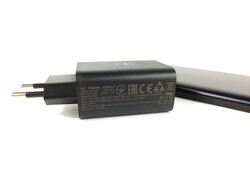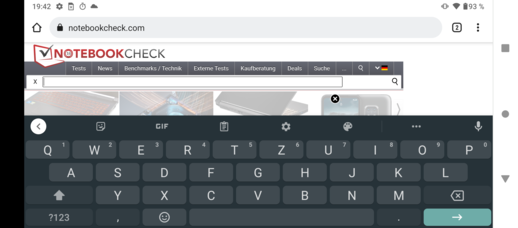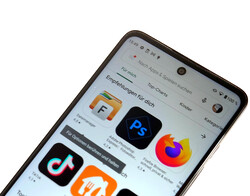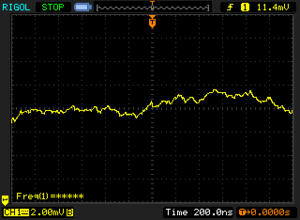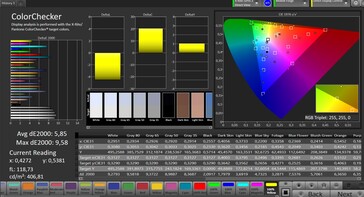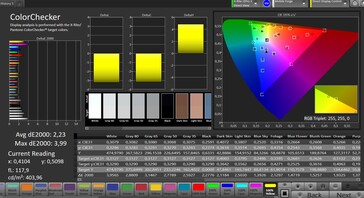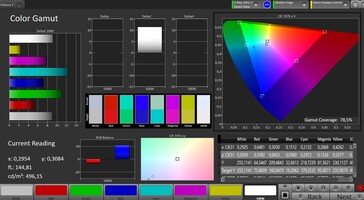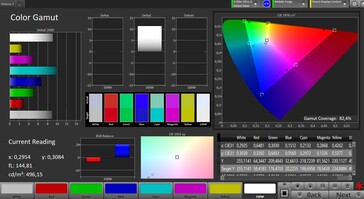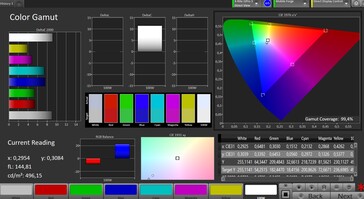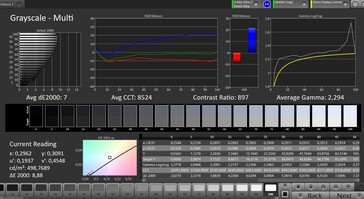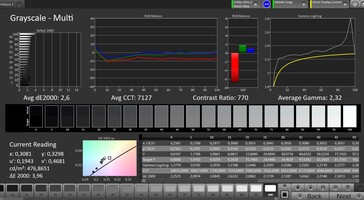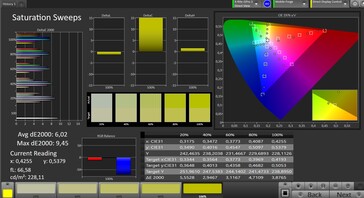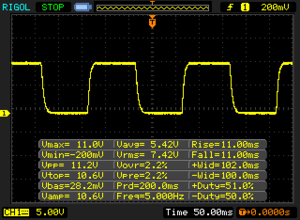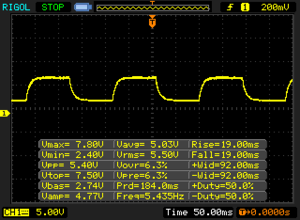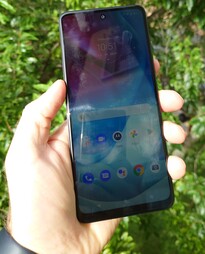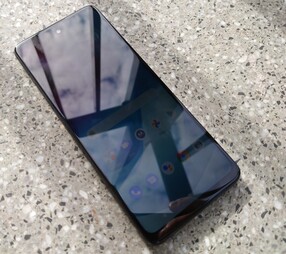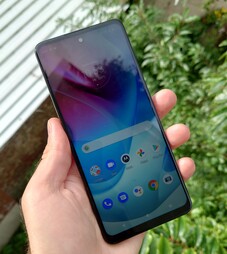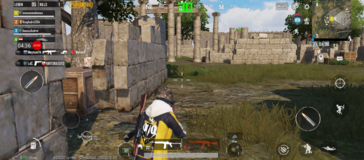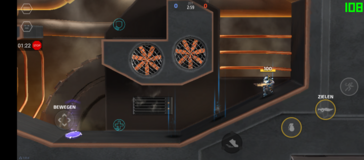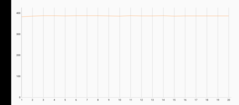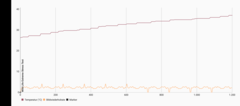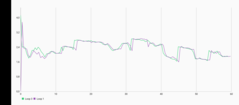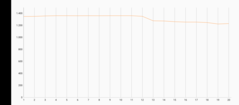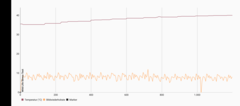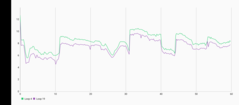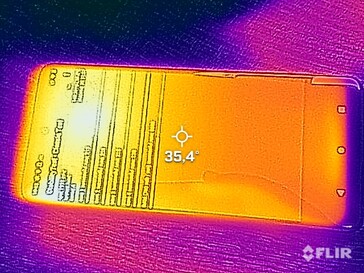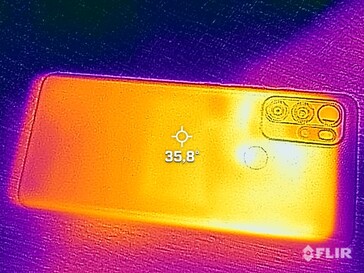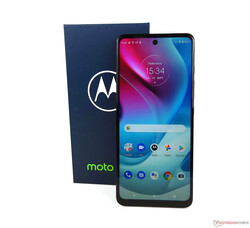Motorola Moto G60s review: Budget mid-range smartphone with 50-watt fast charging and a 120 Hz display
With the Moto G60s, Motorola introduces fast charging at over 30 watts in the affordable mid-range. The 5,000 mAh battery is equipped with the in-house TurboPower50 charging technology, which is meant to make long charging times a thing of the past. In this regard, Motorola advertises a runtime of 12 hours after only 12 minutes of charging.
Besides the fast charging standard, the 270-Euro (~$316) smartphone (MSRP) features a 6.8-inch Max Vision Full HD+ display with a high refresh rate of 120 Hz and a quad-camera setup. In addition, the Moto G60s is powered by a MediaTek Helio G95 processor that's supported by 4 GB of RAM and 128 GB of internal UFS storage.
Possible contenders in comparison
Rating | Date | Model | Weight | Drive | Size | Resolution | Best Price |
|---|---|---|---|---|---|---|---|
| 80.9 % | 09/2021 | Motorola Moto G60s Helio G95, Mali-G76 MP4 | 212 g | 128 GB UFS 2.1 Flash | 6.80" | 2480x1080 | |
| 78.1 % | 08/2021 | Samsung Galaxy A22 4G Helio G80, Mali-G52 MP2 | 186 g | 128 GB eMMC Flash | 6.40" | 1600x720 | |
| 81.1 % | 06/2021 | Xiaomi Redmi Note 10S Helio G95, Mali-G76 MP4 | 178.8 g | 128 GB UFS 2.2 Flash | 6.43" | 2400x1080 | |
| 81.7 % | 05/2021 | Realme 8 Helio G95, Mali-G76 MP4 | 177 g | 128 GB UFS 2.1 Flash | 6.40" | 2400x1080 | |
| 78.9 % | 06/2021 | Oppo A74 SD 662, Adreno 610 | 175 g | 128 GB UFS 2.1 Flash | 6.43" | 2400x1080 |
Case - Motorola smartphone with punch hole
The sturdiness and build quality of the Moto G60s are very solid - there's nothing to criticize here considering the MRP. The Motorola phone's case is mostly made of plastic, and it doesn't radiate any premium quality feel, but it doesn't feel cheap anyway thanks to its textured back. However, due to the very large IPS screen, the Moto G60s isn't really comfortable to hold.
The case of the Motorola phone has an official IP certification, but only according to the IP52 standard. Consequently, Motorola only advertises the G60s as having a water-repellent design, which is intended to be a barrier to protect against moderate contact with water. The case of the Moto G60s is not water-resistant, and therefore, it's not intended for diving, among other activities.
The screen-to-body ratio is a good 86% for this price range thanks to the punch-hole cutout, which is quite small, and the relatively narrow display bezels.
Connectivity - The Moto G60s with UFS storage
The Moto smartphone's connectivity features include an FM radio, a dual-SIM function, a 3.5 mm jack, and Miracast. The G60s has a USB Type-C port at the bottom of the case that supports the USB 2.0 standard, and peripherals can be connected using an OTG adapter. Our review sample's internal UFS storage has a capacity of 128 GB, but 21 GB is already occupied by the system out of the box.
The G-series Moto phone doesn't have a status LED or a true always-on function for incoming notifications. However, Motorola provides its inexpensive mid-range smartphone with the familiar display preview function, which shows notifications when the phone is lifted.
microSD card reader
The internal storage of the Moto G60s can be expanded by up to 1 TB with a microSD card. With our reference memory card, the Angelbird V60, we take a closer look at the memory slot's speed. While the results in the CPDT benchmark, especially for sequential reading, are at a really good level, the data rates in our JPEG copy test are below average at 23 MB/s.
| SD Card Reader - average JPG Copy Test (av. of 3 runs) | |
| Samsung Galaxy A22 4G (Angelbird V60) | |
| Oppo A74 (Toshiba Exceria Pro M501) | |
| Motorola Moto G60s (Angelbird V60) | |
| Xiaomi Redmi Note 10S (Toshiba Exceria Pro M501) | |
Cross Platform Disk Test (CPDT)
Software - Motorola phone with Android 11
Motorola has installed an "unmodified version" of Android 11 on the Moto G60s that comes with security patches at the level of July 2021. On top of that, the manufacturer enhances the user interface with My UX, making the familiar Moto Experiences available, including gestures for activating the flashlight or options to customize the design. Third-party apps are also largely absent, and with the exception of Facebook, only Google applications and the manufacturer's in-house apps are installed.
Apart from the minimalistic user interface, Motorola equips its Moto phone with hardware and software security features called "ThinkShield for Mobile". This is a platform based on Lenovo's ThinkShield brand, and it's intended to provide special protection against malware, phishing, and network attacks.
The Camera2 API in the Moto G60s is available with Level 3, and thanks to DRM Widevine L1, you can watch streaming content in HD quality.
Communication and GNSS - Moto G60s with Wi-Fi 5
In terms of WLAN, the mid-range phone offers a solid configuration with Wi-Fi 5. Although this doesn't provide high transfer rates within domestic networks, the G60s performs consistently and on par with other smartphones in this price range in combination with our reference router, the Netgear Nighthawk AX12. As for additional communication modules, Motorola has also implemented an NFC chip for near-field communication as well as Bluetooth 5.0.
Since the built-in MediaTek SoC doesn't support the 5G standard, the chipset in the Moto G60s only integrates an LTE modem for mobile Internet access. This covers a total of 12 LTE bands and all LTE frequencies that are relevant for Germany, including the LTE bands 20 and 28. However, a trip to foreign countries like the USA, among others, could be a problem in this regard (without bands 13 and 25 being supported).
| Networking | |
| iperf3 transmit AX12 | |
| Motorola Moto G60s | |
| Realme 8 | |
| Samsung Galaxy A22 4G | |
| Xiaomi Redmi Note 10S | |
| Oppo A74 | |
| iperf3 receive AX12 | |
| Average of class Smartphone (last 2 years) | |
| Realme 8 | |
| Samsung Galaxy A22 4G | |
| Motorola Moto G60s | |
| Xiaomi Redmi Note 10S | |
| Oppo A74 | |
The position is determined using the GPS (L1), GLONASS, and Galileo satellite systems along with SBAS. The satellite signal is obtained quickly outdoors and with an accuracy of about two meters. Even indoors, the Moto G60s manages to determine its position very fast.
In order to be able to assess the positioning accuracy of our test device in practice, we track a route in parallel with the Garmin Edge 520 GPS bike computer for comparison purposes.
The deviations are relatively small, resulting in a difference of only about 30 meters between the mid-range phone and the navigation device at the end of the almost 15-kilometer test route. The detailed GPS log is also impressive with a similar positioning accuracy as the Garmin device.
Telephone and call quality - Motorola smartphone with VoLTE
There's not much to complain about in terms of call quality with the Moto G60s. Speech is reproduced intelligibly, and the person on the other end of the line also described us as sounding clear. Skype video calls using the built-in front-facing camera and the speaker worked smoothly in the test.
Thanks to Wi-Fi calling, the Moto phone can be used to make calls over the WLAN network when mobile reception is limited. Furthermore, calls can be made via LTE networks thanks to the VoLTE feature.
Cameras - Moto G60s with quad-camera setup
Motorola has equipped its mid-range model with a quad-camera setup on the back, where the main sensor has a resolution of 64 MP. Motorola hasn't disclosed the selected sensor. Most likely, the GW1 sensor from Samsung is used here as in other Motorola phones.
The high-resolution 64 MP main sensor takes photos with decent quality, but details are somewhat limited - and not only at the edges - due to the relatively low sharpness level. Exposure isn't 100% accurate, either, under incident sunlight. The quad-pixel technology ensures a solid illumination when there's less light, which leads to good image sharpness for subjects in the dark, considering we're talking about a mid-range phone.
In addition to the main camera, the G60s sports a macro vision lens as well as a depth sensor and an ultra wide-angle camera. The 118° wide-angle lens, which roughly resembles the field of view of the human eye, is clearly inferior in terms of quality - blurriness is pronounced at the edges, and low-light quality is very poor. Especially the dynamic range in the photos drops noticeably when compared to the main camera. Overall, pictures also look rather cool with this lens.
Although structures are somewhat softened with the 16 MP front-facing camera, the Moto G60s still manages nice selfies in daylight. Bokeh effects in portrait mode are also achieved quite well. As is usual in this price range, videos can only be recorded in Full HD with the selfie camera.
Motorola intends to set itself apart from the mid-range competition in terms of video with features like the dual-capture mode, where the main camera and the front-facing camera can record video at the same time. Apart from software, however, only a UHD option (3840x2160) at 30 fps is available for the 64 MP lens; 60 fps isn't supported even at 1080p. Switching between the wide-angle and ultra wide-angle lenses isn't possible while recording, either.
Image Comparison
Choose a scene and navigate within the first image. One click changes the position on touchscreens. One click on the zoomed-in image opens the original in a new window. The first image shows the scaled photograph of the test device.
Main cameraMain cameraWide-angle cameraLow-lightWe subject the 64 MP rear-facing camera to further tests under controlled lighting conditions. We use the ColorChecker Passport to analyze the color representation in comparison to the actual reference colors. We measure once at full studio lighting and once at a light intensity of 1 lux.
The analysis with the ColorChecker Passport reveals average deviations for an affordable mid-range phone compared to the actual reference colors. Dark colors in particular are displayed significantly brighter. The white balance could be better as well. The image sharpness in our test chart isn't very pronounced in the peripheral areas in particular.
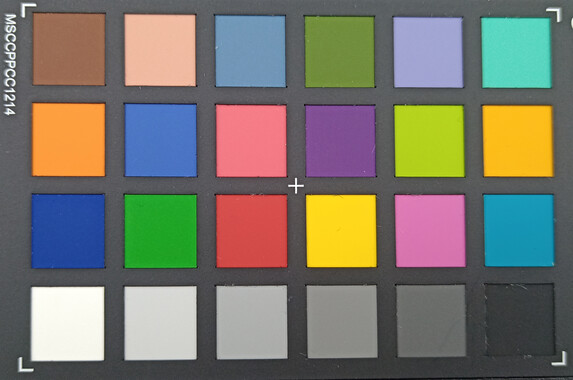
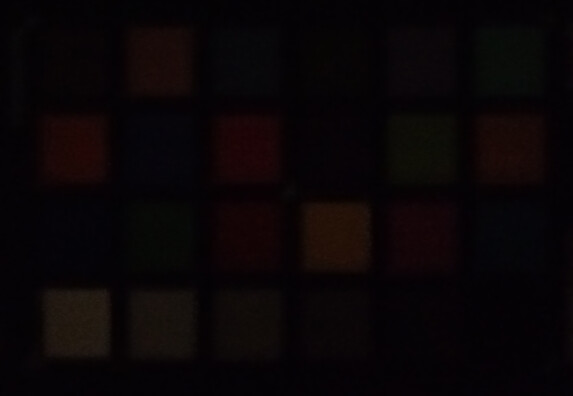
Accessories and warranty - Motorola phone with 50-watt charger
Besides the Moto smartphone itself, a modular 50-watt power adapter with an extra USB-A port and a USB cable are included in the box. A protective case is not included with the G60s.
Motorola grants a 24-month warranty for the Moto G smartphone in Germany.
Input devices and handling - Motorola smartphone with FaceUnlock
As with other Moto phones, the Google Assistant can be launched on the Moto G60s for voice control via a special button at the side of the device. The other built-in buttons are also easy to use, they sit firmly in the frame, and their pressure points are pleasantly firm. The capacitive multi-touchscreen accurately responds to inputs.
A classic fingerprint scanner is available on the back for biometric security. Although the display takes a second to unlock, there's no room for criticism in terms of reliability. A FaceUnlock function is also available. The 2D face recognition is less secure, and it's often not particularly faster.
Display - Moto G60s with 120 Hz
The 6.8-inch 120 Hz LC display has a resolution of 2480x1080 pixels, which results in a pixel density of just under 400 PPI. The IPS panel of the Moto G60s has a relatively uneven brightness distribution. Especially at the upper display edge and in the area of the punch hole, a significant shadow formation is visible.
Motorola specifies an HDR-10 certification for the G60s, but the higher dynamic range of HDR content is unlikely to be noticeable with the relatively dim IPS panel, even for trained eyes - the brightness is too low for this, although it's at a good level compared to the mid-range competition. The maximum brightness that we measured with a pure white display background is 602 cd/m².
In addition, we examine the panel's luminosity with an evenly distributed proportion of dark to bright areas (APL50) in the test. We determined a similar maximum brightness of 610 cd/m² here.
| |||||||||||||||||||||||||
Brightness Distribution: 83 %
Center on Battery: 600 cd/m²
Contrast: 1075:1 (Black: 0.56 cd/m²)
ΔE Color 2.23 | 0.5-29.43 Ø5
ΔE Greyscale 2.6 | 0.57-98 Ø5.3
99.4% sRGB (Calman 2D)
Gamma: 2.32
| Motorola Moto G60s IPS, 2480x1080, 6.80 | Samsung Galaxy A22 4G Super AMOLED, 1600x720, 6.40 | Xiaomi Redmi Note 10S AMOLED, 2400x1080, 6.43 | Realme 8 Super AMOLED, 2400x1080, 6.40 | Oppo A74 AMOLED, 2400x1080, 6.43 | |
|---|---|---|---|---|---|
| Screen | -88% | 14% | -11% | -20% | |
| Brightness middle | 602 | 349 -42% | 706 17% | 590 -2% | 606 1% |
| Brightness | 564 | 352 -38% | 701 24% | 607 8% | 606 7% |
| Brightness Distribution | 83 | 92 11% | 98 18% | 92 11% | 98 18% |
| Black Level * | 0.56 | ||||
| Contrast | 1075 | ||||
| Colorchecker dE 2000 * | 2.23 | 5.87 -163% | 2.1 6% | 2.64 -18% | 3.6 -61% |
| Colorchecker dE 2000 max. * | 3.99 | 15.51 -289% | 4.9 -23% | 6.85 -72% | 6.2 -55% |
| Greyscale dE 2000 * | 2.6 | 2.7 -4% | 1.5 42% | 2.4 8% | 3.3 -27% |
| Gamma | 2.32 95% | 2.07 106% | 2.29 96% | 2.265 97% | 2.31 95% |
| CCT | 7127 91% | 6970 93% | 6447 101% | 6913 94% | 6704 97% |
* ... smaller is better
Screen Flickering / PWM (Pulse-Width Modulation)
| Screen flickering / PWM not detected | |||
In comparison: 53 % of all tested devices do not use PWM to dim the display. If PWM was detected, an average of 17900 (minimum: 5 - maximum: 3846000) Hz was measured. | |||
Compared with our chosen competition with OLED displays, the LC display of the Moto G60s has a clear contrast disadvantage. The ratio of the black level to the maximum brightness of about 1:1000 is average at best, even for an LC panel.
On the other hand, the analysis performed with the spectrophotometer and the CalMAN software shows low average deltaE deviations from the sRGB color space of 2.2 (colors) and 2.3 (grayscales), respectively, using the default color profile. Furthermore, the color temperature that we measured in this "Natural" mode is about 7,100 K, which is cooler than the ideal value of 6,500 K.
Display Response Times
| ↔ Response Time Black to White | ||
|---|---|---|
| 22 ms ... rise ↗ and fall ↘ combined | ↗ 11 ms rise | |
| ↘ 11 ms fall | ||
| The screen shows good response rates in our tests, but may be too slow for competitive gamers. In comparison, all tested devices range from 0.1 (minimum) to 240 (maximum) ms. » 42 % of all devices are better. This means that the measured response time is similar to the average of all tested devices (21.5 ms). | ||
| ↔ Response Time 50% Grey to 80% Grey | ||
| 38 ms ... rise ↗ and fall ↘ combined | ↗ 19 ms rise | |
| ↘ 19 ms fall | ||
| The screen shows slow response rates in our tests and will be unsatisfactory for gamers. In comparison, all tested devices range from 0.2 (minimum) to 636 (maximum) ms. » 49 % of all devices are better. This means that the measured response time is worse than the average of all tested devices (33.7 ms). | ||
Performance - Moto G60s with MediaTek SoC
The MediaTek Helio G95 is an SoC manufactured in a 12 nm process, which is especially aimed at gamers due to the low latency between the GPU and the display. The chipset integrates two Cortex-A76 cores running at up to 2.05 GHz as well as six small Cortex-A55 cores with clock speeds of 2 GHz. The Mali-G76 MP4 is integrated as the graphics unit.
In everyday use, the system speed is pleasing, and it provides a mostly smooth experience in combination with only 4 GB of RAM but a 120 Hz display - minor micro stuttering is still visible from time to time when multitasking.
The Moto phone delivers a decent performance in our benchmark package, but a large performance gap is noticeable compared to the Poco F3 (prices start at around $395 on newegg). The Helio G95 in the realme 8 delivers slightly better results as well; the G60s is outperformed in the graphics benchmarks in particular, but the Moto smartphone still performs on par with the mid-range competition. On the other hand, the browser benchmark scores are remarkably good. The UFS 2.1 storage also performs on par with our comparison devices using the same 2.1 standard.
| GFXBench 3.1 | |
| on screen Manhattan ES 3.1 Onscreen (sort by value) | |
| Motorola Moto G60s | |
| Samsung Galaxy A22 4G | |
| Xiaomi Redmi Note 10S | |
| Oppo A74 | |
| Xiaomi Poco F3 | |
| Average Mediatek Helio G95 (26 - 31, n=4) | |
| Average of class Smartphone (3.7 - 158, n=185, last 2 years) | |
| 1920x1080 Manhattan ES 3.1 Offscreen (sort by value) | |
| Motorola Moto G60s | |
| Samsung Galaxy A22 4G | |
| Xiaomi Redmi Note 10S | |
| Oppo A74 | |
| Xiaomi Poco F3 | |
| Average Mediatek Helio G95 (29 - 33, n=4) | |
| Average of class Smartphone (6.2 - 279, n=185, last 2 years) | |
| UL Procyon AI Inference for Android - Overall Score NNAPI (sort by value) | |
| Motorola Moto G60s | |
| Samsung Galaxy A22 4G | |
| Xiaomi Poco F3 | |
| Average Mediatek Helio G95 (5923 - 8538, n=2) | |
| Average of class Smartphone (207 - 84787, n=150, last 2 years) | |
| Jetstream 2 - Total Score | |
| Average of class Smartphone (13.8 - 351, n=173, last 2 years) | |
| Motorola Moto G60s (Chrome93) | |
| Average Mediatek Helio G95 (16.9 - 50.8, n=5) | |
| Oppo A74 (Chrome 91.0.4472.77) | |
| Samsung Galaxy A22 4G (Chrome 92) | |
| Xiaomi Redmi Note 10S (Chrome 91) | |
| JetStream 1.1 - Total Score | |
| Average of class Smartphone (last 2 years) | |
| Motorola Moto G60s (Chrome93) | |
| Average Mediatek Helio G95 (26.7 - 72.4, n=3) | |
| Samsung Galaxy A22 4G (Chrome 92) | |
| Oppo A74 (Chrome 91.0.4472.77) | |
| Xiaomi Redmi Note 10S (Chrome 91) | |
| Speedometer 2.0 - Result | |
| Average of class Smartphone (14.9 - 445, n=157, last 2 years) | |
| Motorola Moto G60s (Chrome93) | |
| Samsung Galaxy A22 4G (Chome 92) | |
| Average Mediatek Helio G95 (14.7 - 34.2, n=4) | |
| Oppo A74 (Chrome 91.0.4472.77) | |
| Xiaomi Redmi Note 10S (Chrome 91) | |
| WebXPRT 3 - Overall | |
| Average of class Smartphone (39 - 304, n=122, last 2 years) | |
| Oppo A74 (Chrome 91.0.4472.77) | |
| Motorola Moto G60s (Chrome93) | |
| Samsung Galaxy A22 4G (Chrome 92) | |
| Average Mediatek Helio G95 (28 - 57, n=5) | |
| Xiaomi Redmi Note 10S (Chrome 91) | |
| Octane V2 - Total Score | |
| Average of class Smartphone (4633 - 89112, n=213, last 2 years) | |
| Motorola Moto G60s (Chrome93) | |
| Average Mediatek Helio G95 (4808 - 16289, n=4) | |
| Samsung Galaxy A22 4G (Chrome 92) | |
| Oppo A74 (Chrome 91.0.4472.77) | |
| Xiaomi Redmi Note 10S (Chrome 91) | |
| Mozilla Kraken 1.1 - Total | |
| Xiaomi Redmi Note 10S (Chrome 91) | |
| Average Mediatek Helio G95 (2673 - 10797, n=5) | |
| Oppo A74 (Chrome 91.0.4472.77) | |
| Samsung Galaxy A22 4G (Chrome 92) | |
| Motorola Moto G60s (Chrome93) | |
| Average of class Smartphone (388 - 9999, n=173, last 2 years) | |
* ... smaller is better
| Motorola Moto G60s | Samsung Galaxy A22 4G | Xiaomi Redmi Note 10S | Realme 8 | Oppo A74 | Average 128 GB UFS 2.1 Flash | Average of class Smartphone | |
|---|---|---|---|---|---|---|---|
| AndroBench 3-5 | -30% | 16% | 4% | 9% | 30% | 216% | |
| Sequential Read 256KB | 498.5 | 297.7 -40% | 498.8 0% | 526 6% | 515 3% | 760 ? 52% | 1508 ? 203% |
| Sequential Write 256KB | 200.5 | 183 -9% | 372 86% | 187.8 -6% | 255.3 27% | 297 ? 48% | 1118 ? 458% |
| Random Read 4KB | 123.3 | 101.2 -18% | 110.5 -10% | 144 17% | 139.4 13% | 152.9 ? 24% | 247 ? 100% |
| Random Write 4KB | 135.3 | 66.9 -51% | 121 -11% | 133 -2% | 126.4 -7% | 131.6 ? -3% | 272 ? 101% |
Games - Motorola smartphone with the Mali-G76
With the Moto G60s, Motorola delivers a good overall package for gamers despite the mid-range price. Along with a large 120 Hz panel, the Moto phone has sufficient power for a gaming experience that exceeds 60 fps - at least in simple games. We took a closer look at a few Android titles with our partner GameBench.
The US-based manufacturer sets a 40 fps limit for PUBG Mobile, and only 30 fps is possible when using the HD graphics setting - at the time of conducting our review, the UHD mode is not selectable. In Armajet, which theoretically supports up to 144 fps, we manage a maximum of 116 fps. However, we "only" get 85 frames per second on average.
Emissions - Motorola phone remains cool
Temperature
The rear of the case heats up within a moderate range under prolonged load - the Moto G60s never gets truly hot in the test. We use the GFXBench app's battery test to examine the heat development on the inside. Here, the respective scenarios are run 30 times in a row, and both the battery status as well as the frame rates are registered.
Although performance decreases continuously over time, we still can't detect a significant drop in frame rates with a loss of about 20% The stability of the Moto G60s is also very good in the stress tests of the 3DMark benchmark.
(+) The maximum temperature on the upper side is 38.2 °C / 101 F, compared to the average of 35 °C / 95 F, ranging from 21.9 to 56 °C for the class Smartphone.
(+) The bottom heats up to a maximum of 36.9 °C / 98 F, compared to the average of 33.8 °C / 93 F
(+) In idle usage, the average temperature for the upper side is 24 °C / 75 F, compared to the device average of 32.7 °C / 91 F.
Speaker
The Moto G60s only has one speaker at the bottom. Its sound quality is okay, but the Xiaomi Mi 11 Lite 4G, among others, also offers good-sounding stereo speakers in this price range. As expected, there's no bass presence in the sound pattern of the Moto G60s, but super high tones suffer heavily as well.
You don't have to do without an audio jack with the Motorola phone. The audio output is pleasingly loud and subtle. Wireless headphones can be connected via Bluetooth 5.0. The mid-range phone supports the following BT codecs: AAC, aptX, aptX HD, and aptX adaptive as well as LDAC.
Motorola Moto G60s audio analysis
(+) | speakers can play relatively loud (82.9 dB)
Bass 100 - 315 Hz
(-) | nearly no bass - on average 28.7% lower than median
(±) | linearity of bass is average (14.9% delta to prev. frequency)
Mids 400 - 2000 Hz
(+) | balanced mids - only 4.1% away from median
(+) | mids are linear (5.1% delta to prev. frequency)
Highs 2 - 16 kHz
(+) | balanced highs - only 3.1% away from median
(+) | highs are linear (4.6% delta to prev. frequency)
Overall 100 - 16.000 Hz
(±) | linearity of overall sound is average (21.1% difference to median)
Compared to same class
» 33% of all tested devices in this class were better, 8% similar, 59% worse
» The best had a delta of 12%, average was 38%, worst was 134%
Compared to all devices tested
» 53% of all tested devices were better, 7% similar, 40% worse
» The best had a delta of 4%, average was 25%, worst was 134%
Samsung Galaxy A22 4G audio analysis
(±) | speaker loudness is average but good (80.1 dB)
Bass 100 - 315 Hz
(-) | nearly no bass - on average 27.4% lower than median
(±) | linearity of bass is average (11.7% delta to prev. frequency)
Mids 400 - 2000 Hz
(±) | higher mids - on average 5.2% higher than median
(+) | mids are linear (5.1% delta to prev. frequency)
Highs 2 - 16 kHz
(+) | balanced highs - only 4.9% away from median
(+) | highs are linear (5.7% delta to prev. frequency)
Overall 100 - 16.000 Hz
(±) | linearity of overall sound is average (24.9% difference to median)
Compared to same class
» 55% of all tested devices in this class were better, 7% similar, 38% worse
» The best had a delta of 12%, average was 38%, worst was 134%
Compared to all devices tested
» 72% of all tested devices were better, 6% similar, 22% worse
» The best had a delta of 4%, average was 25%, worst was 134%
Battery life - Moto G60s with 5,000 mAh
Energy consumption
A 5,000 mAh lithium-polymer battery provides energy. It can be recharged in almost exactly 57 minutes with the included 50-watt power adapter when it's completely drained. In terms of power consumption, the Moto G60s proves to be exemplary for a 120 Hz smartphone with a 6.8-inch IPS panel.
| Off / Standby | |
| Idle | |
| Load |
|
| Motorola Moto G60s 5000 mAh | Samsung Galaxy A22 4G 5000 mAh | Xiaomi Redmi Note 10S 5000 mAh | Realme 8 5000 mAh | Oppo A74 5000 mAh | Average Mediatek Helio G95 | Average of class Smartphone | |
|---|---|---|---|---|---|---|---|
| Power Consumption | -60% | -12% | -15% | -57% | -37% | ||
| Idle Minimum * | 0.7 | 1.5 -114% | 0.69 1% | 0.62 11% | 1.273 ? -82% | 0.897 ? -28% | |
| Idle Average * | 0.9 | 2.1 -133% | 1.46 -62% | 1.59 -77% | 1.865 ? -107% | 1.452 ? -61% | |
| Idle Maximum * | 1.2 | 2.5 -108% | 1.5 -25% | 1.63 -36% | 2.05 ? -71% | 1.629 ? -36% | |
| Load Average * | 4.3 | 2.9 33% | 3.67 15% | 4.05 6% | 4.87 ? -13% | 5.55 ? -29% | |
| Load Maximum * | 6.4 | 4.9 23% | 5.58 13% | 5.2 19% | 7.32 ? -14% | 8.31 ? -30% |
* ... smaller is better
Energy consumption: Geekbench (150 cd/m²)
Energy consumption: GFXBench (150 cd/m²)
Battery life
Our comparison devices can be compared best in the tests with an adjusted display brightness (150 cd/m²). The Moto phone manages a solid 14.5 hours using its 120 Hz refresh rate during our continuous video playback test with Wi-Fi disabled. When browsing the web, the mid-range smartphone lasts about 2 hours less. Especially here, the competition offers much more endurance.
| Motorola Moto G60s 5000 mAh | Samsung Galaxy A22 4G 5000 mAh | Xiaomi Redmi Note 10S 5000 mAh | Realme 8 5000 mAh | Oppo A74 5000 mAh | |
|---|---|---|---|---|---|
| Battery Runtime | 52% | 61% | 36% | 33% | |
| Reader / Idle | 1519 | 2867 89% | 3612 138% | 2386 57% | |
| H.264 | 867 | 1297 50% | 1172 35% | 1179 36% | |
| WiFi v1.3 | 763 | 1252 64% | 1087 42% | 1039 36% | 982 29% |
| Load | 283 | 299 6% | 368 30% | 314 11% |
Pros
Cons
Verdict on the Motorola Moto G60s
One of the highlights of the Moto G60s, if not the biggest one, is the proprietary TurboPower50 charging technology, which allows the 5,000 mAh battery to be fully charged in less than an hour. Fortunately, the low-priced mid-range phone also comes with the appropriate power adapter in the box.
Another important feature of the G60s is its 6.8-inch IPS panel with a refresh rate of 120 Hz. This is an LCD and not an OLED display. A trade-off that has to be made with some 120 Hz models in this price range - on the other hand, with the Redmi Note 10 Pro, there are also mid-range phones under 300 Euros (~$352) that come with 120 Hz AMOLED panels.
Fast charging beyond 30 watts in the mid-range? More of that, please!
Users who value streamlined Android UIs and fast charging will find a large, solidly built, and relatively inexpensive 120 Hz smartphone in the Motorola Moto G60s. However, depending on your preferences, the mid-range competition offers alternatives with significantly more performance (Poco F3), better OLED panels (Redmi Note 10S, among others), or stereo speakers (Xiaomi Mi 11 Lite 4G).
Price and availability
Motorola Moto G60s
-
09/18/2021 v7
Marcus Herbrich


 Deutsch
Deutsch English
English Español
Español Français
Français Italiano
Italiano Nederlands
Nederlands Polski
Polski Português
Português Русский
Русский Türkçe
Türkçe Svenska
Svenska Chinese
Chinese Magyar
Magyar
